- Home
- Loren D. Estleman
Detroit Is Our Beat
Detroit Is Our Beat Read online
Detroit
— IS OUR —
Beat
Tales of the Four Horsemen
LOREN D. ESTLEMAN
TO THE GREATEST GENERATION, WITH THANKS
AND
TO ELMORE “DUTCH” LEONARD (1925–2013), WHO MADE DETROIT ONE OF THE GREAT CITIES OF LITERATURE
I wish to commemorate the passing at age 94—all but ignored by our modern media—of Patty Andrews, the last of the singing Andrews Sisters, January 30, 2013. Theirs was the voice of the Home Front.
“There is more law at the end of a nightstick than in any court in the land.”
—OLD DETROIT COPS’ SAYING
“God, You’ve got a job on Your hands in Detroit.”
—THE REVEREND BILLY SUNDAY
Contents
Preface: Blackjacks and B-24s
The Latin Beat
Sob Sister
Soft Lights and Sabotage
Get Sinatra
Death Without Parole
Big Band
The Elevator Man
Sitting Ducks
Tin Cop
Kill Fee
Recommended Sources
Valedictory Note
Preface: Blackjacks and B-24s
I introduced the Four Horsemen in 1998, in a novel called Jitterbug. In that story, the Detroit Racket Squad, part of a skeleton police force struggling to keep the lid on the Motor City during World War II, helped form a mosaic that included black defense workers, the “Arsenal of Democracy,” the 1943 race riot that forced President Franklin D. Roosevelt to declare martial law in the city, the black market, and a serial killer known only as “Kilroy,” who’d convinced himself he was helping out the war effort by murdering hoarders of ration stamps.
Much of this was authentic history. Kilroy and the Horsemen were not; but the challenges my Racket Squad faced reflected the law-enforcement situation as it existed when most of the male population was either overseas or preparing to ship out.
Although Lieutenant Max Zagreb, Sergeant Starvo Canal, Officer Burke—“Burksie”—and Detective Third-Grade Daniel “Baldy” McReary—my creations, all—were successful in bringing Kilroy to justice, they fell far short of the mark when they failed to recognize the ferment going on in the defense plants. There, white Jim Crow southerners worked cheek-by-jowl with blacks and drew the same wages, circumstances unheard-of below the Mason-Dixon Line.
Historically, the place was a powder keg.
On July 20, 1943, the racial tensions burst forth in a brawl on Belle Isle, then spread throughout the city, with atrocities committed on both sides—although the mostly white police department concentrated mainly on the misdeeds of blacks. The carnage ended thirty-six hours later—by force of five thousand federal troops—with thirty-four slain, twenty-five of them black. After three weeks, a committee appointed by Governor Harry F. Kelly to investigate the affair concluded that the black community was to blame. It would take another generation, and another devastating riot, to expose the inequities behind the violence.
My little plainclothes militia isn’t entirely a product of fantasy. It had authentic precedents in L.A.’s Gangster Squad of the late ’40s and early ’50s, Eliot Ness’s storied (and over-romanticized) Untouchables of Al Capone’s Chicago, and, in the grim 1970s, Detroit’s own STRESS (Stop the Robberies, Enjoy Safe Streets) gang of badge-toting cowboys, whose running firefights and pitched gun battles (sometimes against other law enforcers, and in one delirious case, in a courtroom while a trial was in progress) eventually led to its disbandment by popular demand. At one time or another, many of our major cities have felt the need to ramp up police protection, with or without respect to the statutes the police are sworn to uphold; vigilantism, like chivalry, is not dead. As late as 2013, the Detroit Gang Squad was mustered out for reasons similar to the STRESS situation, its members reassigned to the Major Crimes unit.
As if that would make them go away.
In reimagining the Four Horsemen for the short story form, I cleaned them up a bit in the interests of reader identification, replacing virulent racism with ignorant bigotry (redundancy that that is), but let stand such primitive approaches to police work as a cheerful disregard for due process. (It would be irresponsible to rewrite history in toto and whitewash the record.) The result is a tribute to the great crime films of the 1940s, complete with fedoras, exposed electric bulbs, cathedral-shaped radios, sleek roadsters, blackjacks, Tommies, cigarettes, booze, chic women, slick gangsters, and luscious period slang, as well as a tacit condemnation of pre–civil rights thinking. Idealized, like the statues of Egyptian kings and queens, those features were nevertheless a part of the real landscape of the time.
Juxtapose all that with severe police personnel shortages, criminals eager to exploit a perceived breakdown in law and order, and the monstrously lucrative wartime black market, and the writer scarcely lacks for juicy pitfalls to fling his flawed heroes into.
Homework to establish dates, certain details, and the order of events aside, most of what I know about the period came from my parents, who whenever they mentioned “the war” left no question as to which war they were talking about. In their Detroit, the situation was unique and, I’m convinced, never to be repeated. The entire American automobile industry stopped making cars to build tanks, airplanes, ships, weapons, and ammunition. Two thousand miles away, Hollywood celebrities abandoned their glamorous lifestyles to fight or to perform for the USO. Imagine Apple and Microsoft shelving their electronic toys to make communications devices for the military. Picture Brad Pitt and Julia Roberts donning uniforms and braving enemy fire for soldiers’ pay. I can’t, and the example of a string of conflicts in the current century hasn’t supported the image. But to condemn our contemporaries for their decisions would be shortsighted. Pitt and Roberts, among others, have contributed to the greater good in other ways. No two wars are the same.
In World War II, you knew who the bad guys were. They launched sneak attacks and wore black uniforms with skulls and crossbones on the collars. Stateside, they sported silk suits and gorged themselves on black market profits. I didn’t invent Frankie Orr, whom you will meet in the pages that follow; I just gave him a snappy name. The gross mistake of Prohibition provided all the machinery necessary to smuggle a semi-normal lifestyle into a time of deprival. Substitute Firestone tires and fresh eggs for Old Log Cabin whiskey, Bugsy, and you’re good to go. Hell, you’ve still got the boats and trucks from the last time.
But for the law-abiding, it wasn’t all austerity and sacrifice. Styles in fashion, music, movies, automobiles, and architecture reached their zenith just before Pearl Harbor, and held it for four delirious years before entering a slow decline toward faded jeans, unintelligible lyrics, “experimental” films, cookie-cutter cars, and buildings that look like ice cube trays stood on end. I for one would hang on to such advances as civil rights and modern medical marvels and let the rest go. (Would anyone seriously miss Twitter? Walter Winchell’s gossip column served the purpose without amateur help.)
Emphatically, the 1940s were the end of an era. In the next decade, television, the interstate highway system, and the passing of the pioneering patriarchs of the late Industrial Age would change the face of America: The “global village” created by the cathode-ray tube put an end to the small town as we knew it, national chains replaced roadside diners and mom-and-pop stores, and the fate of millions of workers was decided daily in corporate boardrooms. As a result, the second half of the twentieth century bore little resemblance to the first.
It would be irresponsible to pretend that these changes were all bad. The heightened visibility connected with the all-seeing eye of the TV camera led to more intense public scrutiny, so that the
brutal interrogation practices seen in these stories sparked outrage, then action. Although these methods are still with us, they occur infrequently enough to attract national attention, official investigation, and punishment. During the heyday of the Detroit Racket Squad, they were routine, and even applauded by citizens fed up with the lawlessness of Prohibition and the Depression. And so I add this improvement to the list of things to keep.
But, damn, I miss those snazzy neckties.
Police Commissioner John H. Witherspoon—whom you also will get to know—is a historical figure, although you’re not likely to find a statue erected in his memory. On the evidence of his performance in the summer of ’43, he was a fumbling bureaucrat who consistently took all the wrong steps to contain the emergency. His kind of public servant is still very much alive throughout the corridors of power.
I hope I’m wrong, but I doubt Detroit will come back. Myriad attempts to swing that miracle have failed because of political infighting, jaw-dropping graft, and an electorate that votes from spite alone. The city’s idea of progress is to tear down the crack houses built by a dim former governor with good intentions and little foresight; it’s the nation’s leading manufacturer of vacant lots. Malfeasance, incompetence, and jealousy stalk its government. Pressured for payoffs, business executives pony up without protest, and when the public figures involved are caught red-handed, these very victims provide funds for their defense. The local media, knowing at least part of the truth, continued to conduct fawning interviews with Kwame Kilpatrick, the most corrupt mayor in modern history. Even now, those same reporters circle the wagons whenever outside criticism is launched against the city; but then, it’s not their city. At the end of the day they go home to gated communities in the suburbs and bury their heads in the sodded lawns.
It’s a tragedy, because the place has balls. It smokes where it wants, drinks as much as it wants regardless of state law and city ordinance, and no mayor in his right mind would try to wean it off its Coney Islands, paczkis, and pulled-pork sandwiches. Many of its ministers pack iron along with their Bibles, in the grand old tradition of the Wild West; pat down any judge and you’re likely to find a magnum under his or her robes. It’s a town with blood in its veins, like Chicago and Odessa, nothing like soulless Vegas, however some benighted types would make it so, with their casinos packed with grim seniors in sweatsuits and cocktail bars stocked with forty brands of vodka; as if there were any difference between Five O’Clock and Stoli. Those who drink it don’t do so for pleasure, only to get drunk and barricade themselves in their homes with firearms when the neighbors complain about the noise.
Detroit has attitude; maybe not the most pleasant, but an attitude just the same, and the absence on its streets of pedestrians carrying bottled water and containers of antibiotic hand cream is bracing, if you miss men who don’t wear cologne and women who don’t bikini-wax. It ain’t pretty, but you can be sure that what you see is what you get.
I find it comforting, in an ostrich sort of way, to scan old numbers of the News, Free Press, and Hearst’s Times on microfilm in the Detroit Public Library, screen archival documentaries at the Detroit Institute of Arts, and revisit the place during its most vibrant period. Then, the fate of the world depended upon its industry, consumers wearing business suits and white cotton gloves streamed through its five major department stores, the Roxy and the Broadway-Capitol changed their features every three days (with live stage shows between programs), and the city itself showed every promise of emerging from the hostilities as the fourth largest in the United States.
Granted, the 1940s of the Four Horsemen is perhaps a little too on the money: a place with the sharp, unnatural contrasts of a noir film or a William Hopper painting, the same haunting tune playing over and over on the jukebox, the nickels fed by some hollow-eyed existentialist with a cigarette smoldering between his lips and no real ear for music. Taxi drivers are invariably Irish, and philosophical as to what’s wrong with civilization. The rampant racism is muted for contemporary ears. The smoke rises just a little too slowly toward the black pall above the tin shade, and the dialogue is far too glib. The characters go about their business in a twilit limbo; vampires in pinstripes and fur stoles, doomed to burst into flame in the first shaft of sunlight.
Well, what’s wrong with that? It’s fiction’s responsibility to be better than life.
With one exception, “Kill Fee,” which was written especially for this collection, all these stories originally appeared in Alfred Hitchcock’s Mystery Magazine, a superb anthology edited by Linda Landrigan. It’s been a happy association from the beginning, when she replaced the late great Cathleen Jordan, as has been my experience with Janet Hutchings, editor in chief of AHMM’s equally fine sister publication, Ellery Queen’s Mystery Magazine. I’m deeply grateful to them both, and not just for myself: Along with the master anthologist Marty Greenberg—sadly, also no longer with us—they’ve kept the short story alive when the market favors fat tomes populated with bloodsucking teenagers, stumbling zombies, and unhappy couples trapped in a constant state of stale suburbia.
Now, let’s return to an era when a dame was a tomato, a Joe was a gee, a butt was a smoke, and everybody came with his own theme, swing or gutbucket or foxtrot; when making love meant kissing (okay, necking), you took Coke from the bottle, got your news from the paper, your home entertainment from radio and the pulps, “going out” referred to a movie and an ice-cream soda, a machine was an airplane or an automobile or a political system, gay meant happy, and when you said you were sore you were pissed off; when the jilted fiancé always looked like Ralph Bellamy or Sonny Tufts, the tough broad like Rosalind Russell or Bette Davis or Joan Blondell, Clark Gable was a barnstorming pilot or an oilfield roughneck or a gambler or the captain of a tramp steamer (sometimes all four in one movie); when the President lit up Luckies in newsreels, the First Lady swathed herself in dead weasels, and all the cars had wind wings and running boards but no seat belts or airbags; when you could catch a floor show in a nightclub without being part of it; when telephones were hard and heavy enough to double as bludgeons, and often did; and when it came to building construction the sky was the limit, with a clarinet playing “Street Scene” in the background. A shadow in a hat and trench coat takes one last drag on his Camel, snaps it into the gutter, and strolls off with his hands in his pockets, whistling “I’ll Never Smile Again.” It will be the last refrain someone hears in this life; perhaps the shadow himself.
Spoiler alert: Resist reading “Kill Fee” until you’ve read “Death Without Parole.”
It’s the 1940s, gate. Don’t be a moldy fig. Get hep, jump to the jive, ring up your favorite Jane on the Ameche, and don’t spare the horses (“Scrow, scram, scraw!” says Barbara Stanwyck in Ball of Fire. “The complete conjugation!” exclaims Gary Cooper); but before you shove in your clutch and step on the gas, remember to ask yourself one question: “Is this trip necessary?”
The
— LATIN —
Beat
“Break out the candy, Mac.”
The Latin Beat
“Egg-zayvier Coo-got,” said Lieutenant Zagreb.
“Egg-zayvier Coo-got,” repeated Sergeant Canal.
Zagreb nodded. “’Cause if you pronounce it ‘Haviay Cuga,’ the way they do down in South America, no one will know who you’re talking about.”
Canal shook his kettle-size head. “I’ll never understand this country, and I was born here.”
“I thought you were Polish.”
“Ukrainian. Don’t make that mistake around another Ukrainian; they’re not all as reasonable as me. I never spoke a word of English till I was five, and I spent the next five learning it good. Now you say I got to speak Spanish like some Corktown mick to make myself clear.”
“Congratulations. You’re a citizen.”
“Go to hell, you Balkan bastard.”
Xavier Cugat and his Orchestra were performing One Night Only at the Graystone Ballroom, a wartime benefit.
It was an opportunity for the Detroit Racket Squad to round up illegal aliens waiting to get in, turn them over to Immigration, and reduce the potential for riots in the beer gardens downtown when soldiers on leave got a snootful and started demanding to see the draft card of anyone with a low hairline and an accent—specifically, anyone who pronounced “Xavier Cugat” correctly. The press took a dim view of jailing America’s fighting men, and regarded any sort of foreigner as a saboteur in the making.
“Pre-emptive strike,” Zagreb said. “Like the League of Nations should’ve done to Hitler at Munich. Crack open a zooter’s head tonight and save two of ours next Saturday.”
Canal said, “We sure don’t have any to spare. O’Connor got called up today. That’s three this week.”
“MacArthur’s getting desperate. O’Connor’s feet are flatter than skillets. This keeps up we’ll be letting out space downstairs.”
“What’d the commissioner say about this idea of yours?”
“There’s some things he likes not to know about till they make the Free Press front page.”
“So if one goes sour he can bust us down to Stationary Traffic.”
“We can always enlist.”
“Not me. I might be shooting at a relative. And they don’t make a helmet big enough for your head.”
Zagreb raised and resettled his hat, as if such comments upset him. He was fifty pounds lighter than Canal, but from his eyebrows up and from temple to temple his head was as large as the sergeant’s. His fine hair scarcely covered it, and he had as much hair as he’d started with. Some subordinates, when they thought he was out of earshot, called him “Donovan,” after an episode of the radio program Suspense called “Donovan’s Brain.”
Officers McReary and Burke came in and straddled a couple of straight-back chairs. McReary pushed back his hat to show the freckles that spattered his bald, twenty-three-year-old scalp. Burke, older than any of them but with no ambition to make sergeant, was dark and simian, with hairy paws pushing out of his cuffs. All wore black suits and gray snap-brims, the uniform of the unit. It helped to distinguish friend from foe when the blackjacks came out.

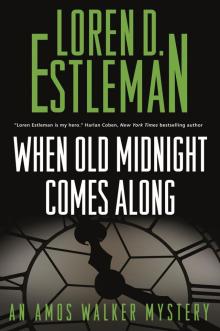 When Old Midnight Comes Along
When Old Midnight Comes Along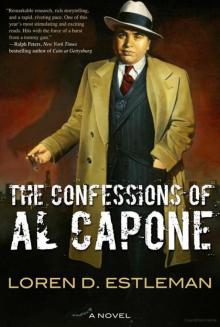 The Confessions of Al Capone
The Confessions of Al Capone The Wolfer
The Wolfer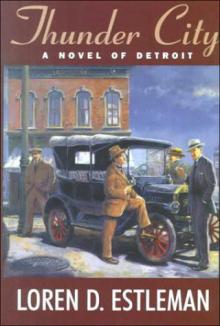 Thunder City
Thunder City Loren D. Estleman - Valentino 01 - Frames
Loren D. Estleman - Valentino 01 - Frames Stamping Ground
Stamping Ground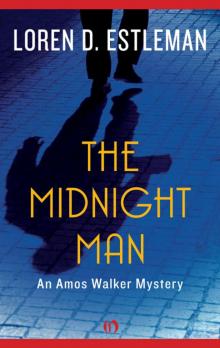 Midnight Man
Midnight Man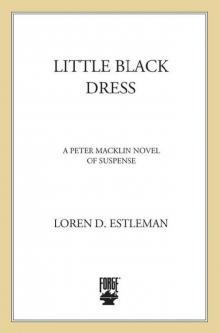 Little Black Dress (Peter Macklin Novels)
Little Black Dress (Peter Macklin Novels)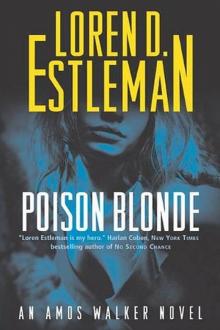 Loren D. Estleman - Amos Walker 16 - Poison Blonde
Loren D. Estleman - Amos Walker 16 - Poison Blonde Brazen
Brazen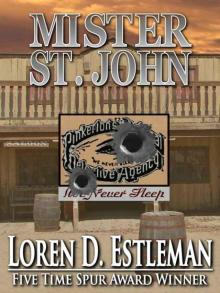 Mr. St. John
Mr. St. John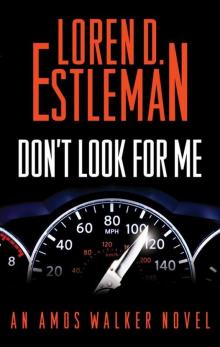 Don't Look for Me: An Amos Walker Novel (Amos Walker Novels)
Don't Look for Me: An Amos Walker Novel (Amos Walker Novels) Stress
Stress Sugartown
Sugartown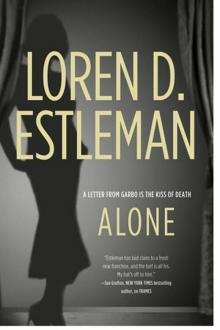 Loren D. Estleman - Valentino 02 - Alone
Loren D. Estleman - Valentino 02 - Alone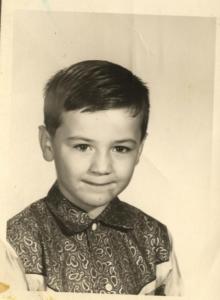 Sweet Women Lie
Sweet Women Lie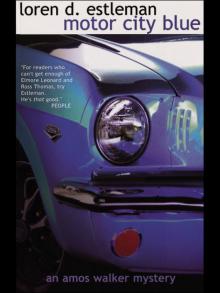 MOTOR CITY BLUE
MOTOR CITY BLUE The Perils of Sherlock Holmes
The Perils of Sherlock Holmes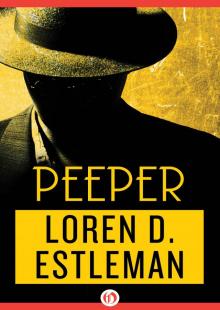 Peeper
Peeper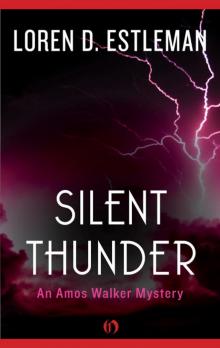 Silent Thunder
Silent Thunder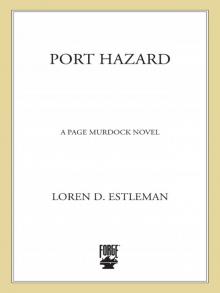 Port Hazard
Port Hazard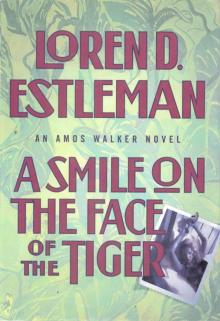 A Smile on the Face of the Tiger
A Smile on the Face of the Tiger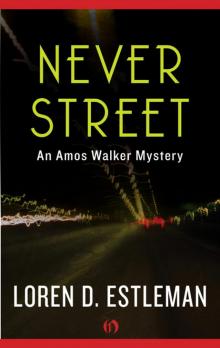 Never Street
Never Street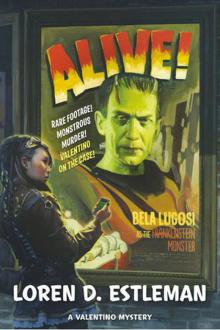 Loren D. Estleman - Valentino 03 - Alive!
Loren D. Estleman - Valentino 03 - Alive!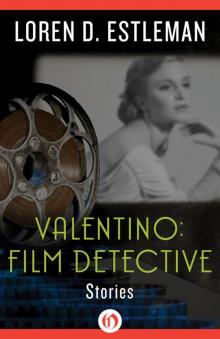 Valentino: Film Detective
Valentino: Film Detective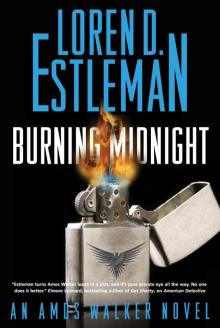 Burning Midnight
Burning Midnight Frames
Frames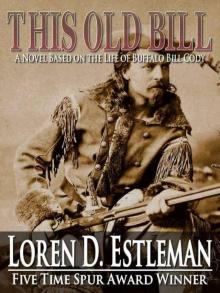 This Old Bill
This Old Bill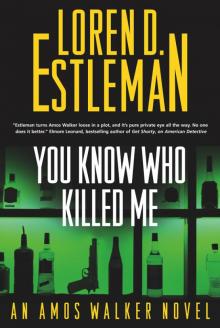 You Know Who Killed Me
You Know Who Killed Me Ragtime Cowboys
Ragtime Cowboys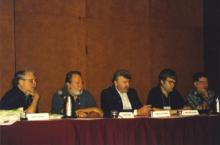 Edsel
Edsel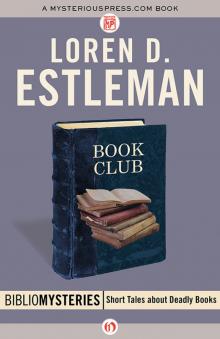 Book Club
Book Club Alive!
Alive!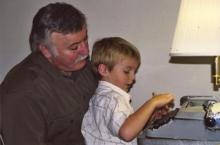 Whiskey River
Whiskey River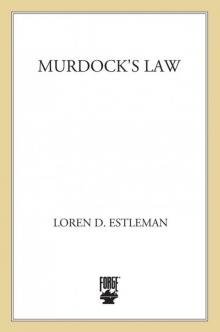 The Murdock's Law
The Murdock's Law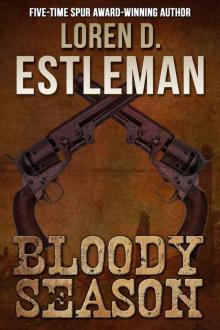 Bloody Season
Bloody Season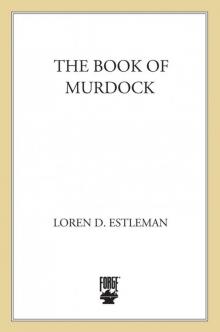 The Book of Murdock
The Book of Murdock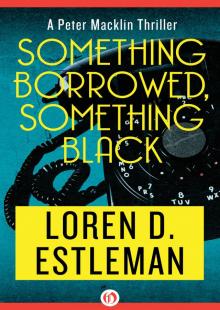 Something Borrowed, Something Black
Something Borrowed, Something Black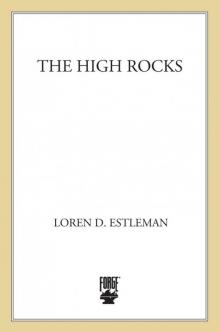 The High Rocks
The High Rocks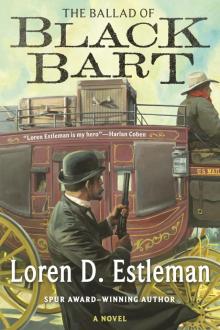 The Ballad of Black Bart
The Ballad of Black Bart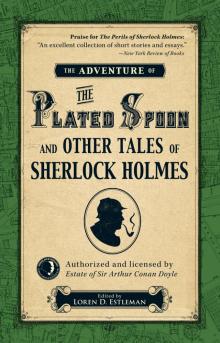 The Adventure of the Plated Spoon and Other Tales of Sherlock Holmes
The Adventure of the Plated Spoon and Other Tales of Sherlock Holmes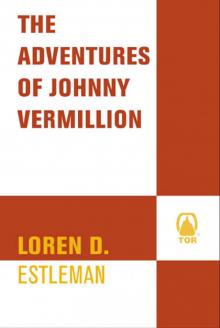 The Adventures of Johnny Vermillion
The Adventures of Johnny Vermillion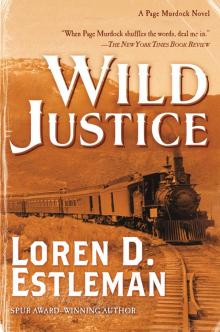 Wild Justice
Wild Justice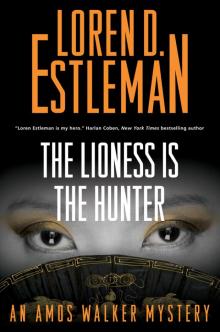 The Lioness Is the Hunter
The Lioness Is the Hunter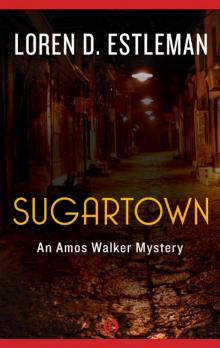 Sugartown: An Amos Walker Mystery (Book Five)
Sugartown: An Amos Walker Mystery (Book Five) Cape Hell
Cape Hell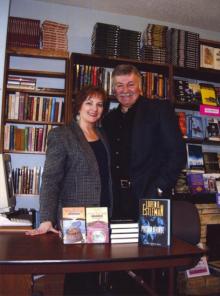 Downriver
Downriver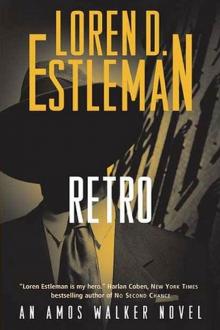 Loren D. Estleman - Amos Walker 17 - Retro
Loren D. Estleman - Amos Walker 17 - Retro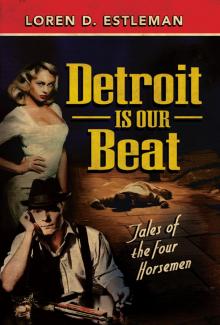 Detroit Is Our Beat
Detroit Is Our Beat Jitterbug
Jitterbug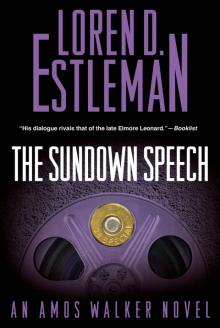 The Sundown Speech
The Sundown Speech Loren D. Estleman - Amos Walker 21 - Infernal Angels
Loren D. Estleman - Amos Walker 21 - Infernal Angels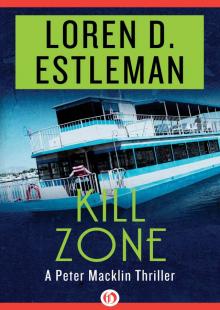 Kill Zone
Kill Zone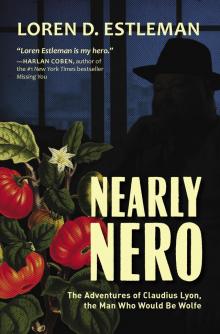 Nearly Nero
Nearly Nero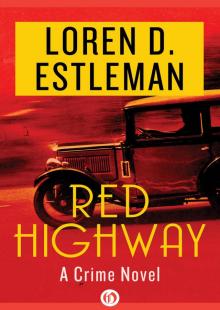 Red Highway
Red Highway American Detective: An Amos Walker Novel
American Detective: An Amos Walker Novel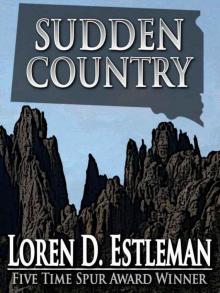 Sudden Country
Sudden Country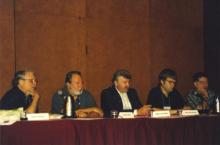 King of the Corner
King of the Corner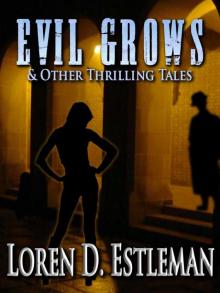 Evil Grows & Other Thrilling Tales
Evil Grows & Other Thrilling Tales Aces & Eights
Aces & Eights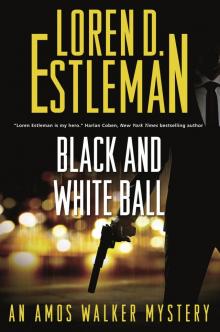 Black and White Ball
Black and White Ball The Hider
The Hider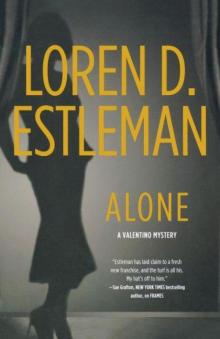 Alone
Alone Amos Walker: The Complete Story Collection
Amos Walker: The Complete Story Collection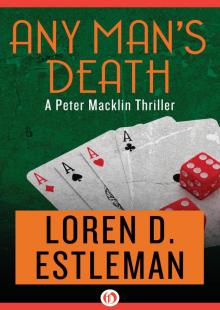 Any Man's Death
Any Man's Death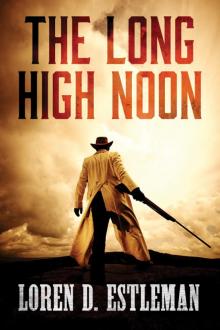 The Long High Noon
The Long High Noon The Witchfinder
The Witchfinder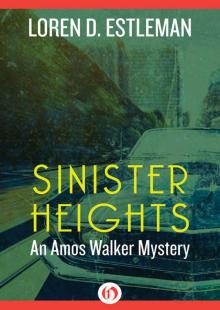 Sinister Heights
Sinister Heights City of Widows
City of Widows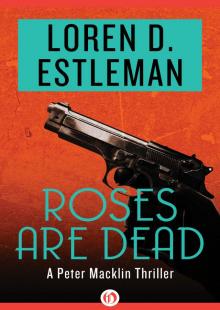 Roses Are Dead
Roses Are Dead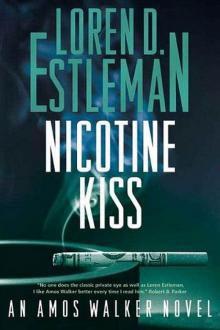 Loren D. Estleman - Amos Walker 18 - Nicotine Kiss
Loren D. Estleman - Amos Walker 18 - Nicotine Kiss